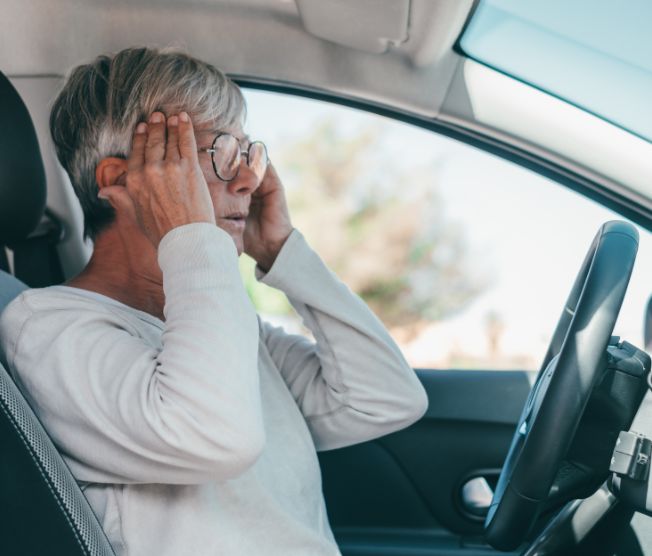 Driving your own car represents freedom, mobility and independence. Yet age-related changes, physical health conditions and medications can alter how older adults respond when they’re behind the wheel.
Driving your own car represents freedom, mobility and independence. Yet age-related changes, physical health conditions and medications can alter how older adults respond when they’re behind the wheel.
These factors can lead to an accident, getting lost or disregarding traffic signals, which puts themselves and others at risk. If you’re concerned about yourself or a loved one, understand when an older adult may want to limit or stop driving altogether.
Concerns With Older Adults Driving
Unfortunately, there’s no definitive age when someone may need to stop driving and older adults often resist giving up their licenses. Cognitive and physical changes, along with risks related to medication usage may come into play.
Over time, your loved one may no longer remember where they are, frequently side-swipe other vehicles, run red lights or stop on green. As such, drivers 70 and older have increased car accident risks.
Due to loss of muscle strength, bone mass and other physical changes, older adults can experience more serious injuries in the event of a crash. Multiple concerns may require limited driving or adaptions, including:
- Age-related Changes: Cognitive and physical changes may result in slower reflexes and an inability to see or hear your surroundings. You may not be able to brake quickly enough to avoid an accident, fully turn your head to observe and respond to your surroundings or lack the strength to turn the wheel.
- Vision Changes: Older adults may need to limit, if not stop nighttime driving due to the lack of light available to perceive their surroundings. If you cannot correctly identify traffic lights or fail to notice you’re too close to another vehicle, it becomes a safety hazard for yourself and others on the road.
- Cognitive Changes: Alzheimer’s disease and dementia can mean that a driver forgets where they are or why they were traveling, doesn’t remember familiar locations or the rules of the road. With early to mid-stage Alzheimer’s disease, you may have to call family and friends for directions back home.
- Health Issues: Certain health conditions associated with age, including arthritis, diabetes, Parkinson’s disease or a previous stroke may increase the risks described above. Certain medications that affect alertness and reflexes can also impact your ability to respond fast enough behind the wheel.
Signs It’s Time to Limit or Stop Driving
Generally, when you notice a decline in your response time or an increase in car accidents, it may be time to stop driving. Signs include:
- Having other drivers routinely honk at you
- Regularly getting into accidents
- Having close calls with other drivers, bicyclists and pedestrians
- Drifting between lanes
- Difficulty merging with traffic
- Driving over curbs
- Unfamiliar scratches, scrapes and dents on your vehicle
- Driving too slow or too fast for the road conditions
- Regularly getting lost, even in familiar areas
- Missing or mixing up traffic signals
- Confusing the gas and brake pedals
- Not responding quick enough to other drivers and vehicles
- Getting easily distracted by your vehicle or surroundings
- Family members and loved ones expressing concerns about your driving
- Feeling nervous if you have to drive
How to Adapt Your Driving
Older adults looking to get around town and remain social don’t have to give up driving right away. Instead, many opt for modifications or driving at specific times. To get started:
- Discuss your driving abilities with your doctor. Mention any stiffness, joint pain or vision issues that could impact your ability to drive and respond to your surroundings. You may need to undergo a driving evaluation, have your eyeglasses prescription updated or start wearing a hearing aid.
- Understand your limitations. This could mean avoiding highways and staying home in the rain, snow and fog. You may also plan routes with fewer turns, ramps and merges or take roads where you can easily judge distances.
- Have your car modified. Automatic transmission and power steering are more friendly and responsive for older adults. Your car’s functions, including steering, shifting and using the pedals, may also need adjustments.
- Give yourself reminders. To keep yourself safe, go through a checklist of turning on your headlights, looking both ways at intersections, keeping a safe distance from other cars and braking as soon as you see slowed or stopped vehicles.
- Avoid distractions. To remain alert behind the wheel, stop tuning the radio, eating in the car and talking with passengers while driving.
- Have a discussion with friends and family about transportation needs. You may need to arrange for rides or discuss solutions like public transportation, the local senior center, rideshares or taxis to meet your daily obligations.
Work with the medical team at West Hartford Health & Rehabilitation Center to have your driving abilities evaluated.

